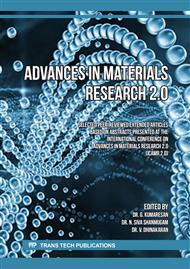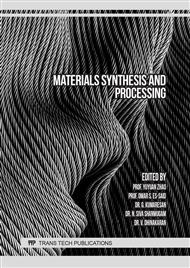p.103
p.115
p.125
p.133
p.141
p.149
p.175
p.183
p.191
Development of Low Calcium Fly-Ash Based Geopolymer Concrete Using Marble Powder
Abstract:
If you compare geopolymer concrete to cement concrete, it is a novel and rising trend in today's concrete business. It can be used as a good substitute for cement concrete and has a variety of benefits over cement concrete, including greater durability. Geopolymer concrete is a kind of green concrete that was created by repurposing waste materials from various power generation companies and thermal power plants. Because of the presence of alkaline activators in geopolymer concrete, it has strong heat resistance capabilities and provides firm bonding between particles, which may result in superior mechanical properties. Geopolymer concrete is also more durable than plain cement concrete. When exposed to acids in a maritime environment, it demonstrates exceptional resistance to corrosion. When low calcium fly ash is used in place of cement, the strength is increased to 40 N/mm2. The amount of marble powder used as a filler was varied as a percent of 0, 5, 10, 15, 20, and 25% to achieve the desired strength of 40 N/mm2. The highest strength was observed when fly-ash was used as a 20% replacement for cement.The molarity of NaOH was employed as 12 molarity at a 2.5 alkaline liquid ratio, which is a good value. They were kept consistent throughout all of the mixes.
Info:
Periodical:
Pages:
191-197
Citation:
Online since:
November 2022
Authors:
Keywords:
Price:
Сopyright:
© 2022 Trans Tech Publications Ltd. All Rights Reserved
Share:
Citation:



